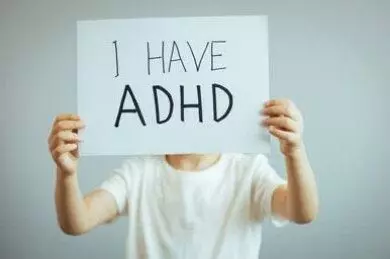What is adult ADHD and why is it so challenging to diagnose it?
In India, ADHD in children is being identified but adult ADHD is diagnosed in less than 1% of the population as there is minimal awareness of this underlying mental health condition as one of the causes for cardiovascular diseases.
By Kaniza Garari
Hyderabad: Attention Deficit Hyperactivity Disorder or ADHD is one of the emerging risk factors for heart diseases in adults, according to a population-based study published in the journal World Psychiatry.
In India, ADHD in children is being identified but adult ADHD is diagnosed in less than 1% of the population as there is minimal awareness of this underlying mental health condition as one of the causes for cardiovascular diseases. The reason being most sufferers of ADHD also have a higher incidence of smoking and obesity due to which the underlying mental cause is not diagnosed easily.
What is adult ADHD?
Adult ADHD is more of an internal restlessness than an outward show of hyperactivity. Mental health experts state that adult ADHD presents with co-morbid anxiety, depression, substance abuse, drug addictions, and relationship issues both personally and professionally.
Adult ADHD is different from childhood ADHD. In childhood ADHD behaviour of hyperactivity, naughtiness, bratty behaviour, and other dominating aspects are visible. In adults, it is more of a restlessness and internal struggle due to which understanding the symptoms is a challenge.
Prevalence of adult ADHD is between 2.5 to 5% or more in the country but those coming to mental health centres are less than 1%. Dr. Ashok Alim Chandani, a consultant psychiatrist at Apollo Hospitals, says, "Adult ADHD is not frequently diagnosed until and unless the cardiologists suspect that mental health evaluation is required for better diagnosis. Very few cases are referred but these underlying mental health conditions are emerging due to the changing needs of a society where confirming to norms is an essential part of daily living. ADHD is also due to genetic predisposition and environmental factors of maternal drug abuse, premature babies, low-birth weight newborns, and also exposure to environmental toxins."
Symptoms of ADHD in adults
Adult ADHD is diagnosed through questionnaires and thorough clinical history. The common symptoms are:
1. Inattention
· Often fails to give close attention to details or makes careless mistakes at work, or with other activities.
· Has trouble holding attention to tasks or work activities.
· Does not seem to listen when spoken to directly.
· Often does not follow instructions and fails to finish chores or duties in the workplace (e.g., loses focus, is side-tracked).
· Often avoids, dislikes, or is reluctant to do tasks that require mental effort over a long period of time.
· Often loses things necessary for tasks and activities (e.g., wallets, keys, paperwork, eyeglasses, mobile phones).
· Is often easily distracted.
· Is often forgetful in daily activities.
2. Hyperactivity and impulsivity
· Often restless or fidgety.
· Often leaves seat in situations when remaining seated is expected.
· Is often "on the go" acting as if "driven by a motor."
· Often talks excessively.
· Often blurts out an answer before a question has been completed.
· Often has trouble waiting their turn.
· Often interrupts or intrudes on others.
Lifestyle and genetic predisposition
Dr. Charan Teja Koganti, consultant neurospyschiatrist at KIMS Hospitals, explains, "It is a disease with a genetic predisposition for sure, but also lifestyle diseases worsen the intensity of adult ADHD. Lack of physical activity, unhealthy dietary patterns, poor sleep schedules, alcohol use/smoking, and excess exposure to screens can also play a role. These are also the other reasons for the increased risk factors of heart diseases like obesity and diabetes. As the other physical diseases require attention and are treated often, the underlying mental condition is not paid attention to. It is only a few who are being referred and it has been seen that their heart conditions despite medications are not under control."
Case studies from Hyderabad
A 25-year-old male was using drugs to reduce his hyperactivity and improve his focus as his inattention had created havoc in his professional life. He had hallucinations due to the use of drugs. He underwent detoxification and was then evaluated via neuropsychiatry, and it was found that he scored high on ADHD. It was only then that he spoke about his issues of inattention. He was put on medications and therapy and is now slowly recovering.
Following an early onset of hypertension at the age of 30 due to obesity, he was referred by cardiologists as he had a general anxiety disorder. After evaluation, it was found that there was a family history of ADHD and after treatment, the mental health disorder and associated blood pressure issues were brought under control.
Does childhood ADHD affect adults also?
The prevalence of childhood ADHD is 10% in boys and 5% in girls, but only 30 to 50% of them are treated in childhood while the rest manifest as adult ADHD. Those who are treated in childhood can also be prone if their genetic and environmental factors create conditions making it difficult for them to handle.
Experts state that they see many untreated cases, most from the professional sector as people are encountering problems in the workplace. The awareness in other sectors is not very high and often goes undiagnosed and untreated.